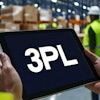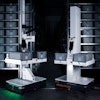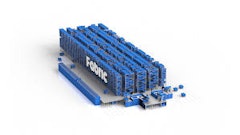
Over the last decade, online marketplaces like Amazon and Walmart have dominated the ecommerce space, accounting for 44.1% of all market share as of 2022. However, this has come at the expense of small businesses, which often struggle to compete. They face a difficult decision: operate independently or surrender to larger e-tailers, sacrificing their identity, autonomy and connections to local communities.
Struggling to compete, small businesses have long demanded a logistics network that can rival e-commerce giants without risking damage to their brand equity. And while the concept of decentralization was once a buzzword, it’s now becoming a realistic solution.
Whereas a centralized supply chain holds all operations in a single fixed location, typically a regional distribution center, a decentralized supply chain instead distributes operations across multiple nodes within a network. These nodes can be a variation of small offices, warehouses or more specifically, nano-fulfillment centers. The demand for these centers has recently surged as companies seek to enhance their fulfillment process efficiency, with the warehouse management market anticipated to grow rapidly in the coming years. To achieve this goal, the centers utilize cutting-edge technologies such as automation, artificial intelligence, machine learning and the IoT.
Stored in urban areas, the small, automated warehouses optimize the last-mile delivery process by distributing inventories and fulfillment capabilities closer to the end consumer, reducing the distance products need to travel and decreasing the time and costs associated with delivery. For companies looking to enhance their brand image, or those whose brand identity is built on sustainability, a decentralized supply chain is an ideal solution.
One of the main challenges that small businesses face when trying to compete with larger retailers is that many consumers have come to expect free or low-cost delivery when shopping online. This can be difficult for small businesses to offer without sacrificing profitability. However, nano-fulfillment centers can help to overcome this obstacle by reducing transportation costs, making it more feasible for small businesses to make delivery as low cost as possible.
Small businesses can also react more quickly to changes in demand by moving inventory closer to the customer, avoiding the need for larger, expensive warehouses to store inventories. This can help reduce overhead costs and increase profitability, enabling small businesses to reinvest capital in their operations and expand their business.
Considering that customer-centric brands have been shown by Deloitte to be 60% more profitable than companies that are not, a decentralized supply chain is an invaluable asset for small businesses. By fulfilling orders in a timely and cost-effective manner, firms can benefit from increased customer satisfaction and loyalty, leading to repeat business and positive word-of-mouth marketing within their local communities.
Reducing risk is an important aspect of business management, and in the logistics sector supply chain disruption carries unprecedented financial consequences. A centralized supply chain is extremely vulnerable to natural disasters because if the central hub goes down, the whole distribution network goes down. Nano-fulfillment centers, however, can mitigate this problem by diversifying inventory locations and fulfillment capabilities. All the while, data from retail partners, consumer purchase behavior and other third parties, help the centers predict supply shortages ahead of time, massively reducing the odds of congestion.
For small businesses, it's understandable that the cost of implementing new systems, such as automation in nano-fulfillment centers, can be a concern. However, it's important to balance this against the potential cost savings that can be achieved through increased efficiency and reduced overheads. This is particularly crucial in the early stages of a business's growth, where maintaining a healthy bottom line is essential. By reducing space and labor costs, nano-fulfillment centers can offer a cost-effective solution for businesses of all sizes.
Small businesses have always comprised 99.9% of the U.S. economy and with business applications steadily rising every month, we must reinvent our outdated supply chain. Ecommerce giants may seem like a convenient outlet for small businesses initially, but they only hold businesses back in the long term. We need to start supporting these businesses by leveling the playing field. The best way to do this is to ramp up advocacy for decentralization.
















